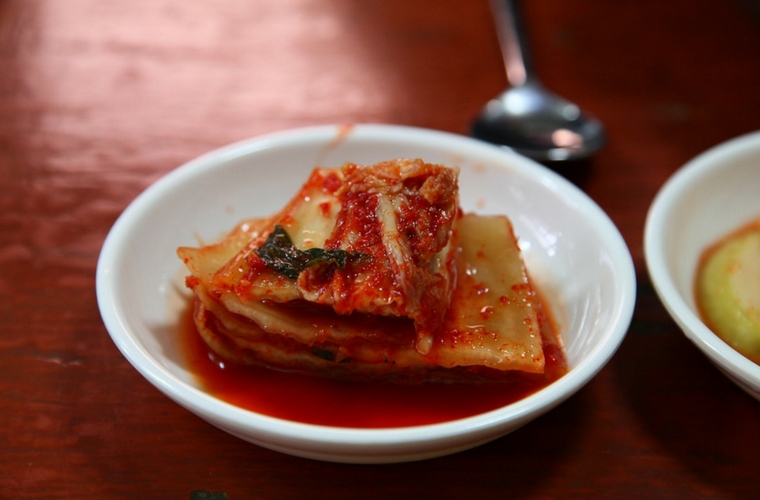What are some of your childhood memories?
One of mine includes a dusty hot summer day in the city where I was born. I remember this long but fast-moving line of people waiting to buy a cooling drink called Kvass. It seemed to make everyone happy and cheerful.
To be honest, I truly develop an appreciation for this beverage only when I learned about its medicinal effects.
Kvass is a fermented drink made from rye or black bread. The beauty of any fermented products is they are filled with microbes or live cultures.
A similar example of what you might’ve tried recently is Kombucha. Many supermarkets now carry different brands of this beverage, but you could also make own. I typically treat myself with Kombucha once a week, but tried to make it at home few years back.
My experiment was not super successful but was mighty educational.
I learned how much sugar it actually took to feed the hungry bacteria and yeast culture to create the beverage. The process of fermentation was pretty fun itself, but my Kombucha never tasted as good as the one I buy. Recently, you might’ve heard of the “dark side of drinking kombucha.”
A great reminder that everything is great in moderation.
A little while ago I shared with you some of the better-known researched reasons for using probiotics.
From digestive and immune health to cardiovascular, women’s, skin, oral and even joint health, microbiome is a source of many new discoveries truly helping us to appreciate the incredible connection between our gut and the rest of our bodies.
There is a lot to learn about probiotics – the variety of species, storage requirements, brands and more. I began exploring products you’d find in your local natural products store. If you’ve ever taken encapsulated probiotics, you know how expensive good brands can be.
As I learned more, I started searching for different ways of getting probiotics into my body. This article shining a brighter light on the safety of store-bought probiotics pushed me to look more carefully at the dietary sources.
These are 3 of my “go to” fermented foods filled with microbes or probiotics:
Yogurt, kefir
Both types of products are milk-based. The milk is fermented with live culture producing a delicious cooling beverage. It’s always exciting for me to the research done with yogurt or kefir. When shopping for these products, make sure the product label clearly demonstrates the presence of live cultures. It’s also important to look for organic and unsweetened versions. If you want to “spice things up”, add other flavors to your yogurt or kefir – frozen blueberries, nuts and seeds or honey work very nicely.
Kimchi, sauerkraut
Cabbage is the main ingredient in both of these products. They are fermented products with tons of live cultures. A Korean spicy version called kimchi has some interesting research demonstrating the benefits. I love using it or German sauerkraut with eggs for breakfast or with vegetables.
Miso, tempeh, natto
These products are made from fermented soybeans. Miso is a Japanese seasoning commonly recognized for its use in miso soup. You can use miso paste in your eggs, other soups or stews. There is interesting research that looks at the use of miso in cancer/radiation and hypertension. Tempeh is cake-like product that originally comes from Indonesia. You can try this great and versatile meat substitute in your vegetarian recipes. Natto is a popular Japanese condiment. You can read more about natto in this article.
In 2014 Michael Pollan wrote a best-selling book called Cooked and recently a wonderful documentary based on the book came out. An entire section of the book is devoted to fermentation. It underscores the importance of this practice to human beings.
In my adventures I came across few websites and books that taught me about fermenting.
These are some of my favorites resources:
- The Art of Fermentation: An In-Depth Exploration of Essential Concepts and Processes from around the World by Sandor Ellix Katz
- Wild Fermentation: The Flavor, Nutrition, and Craft of Live-Culture Foods by Sandor Ellix Katz
- Fermented Vegetables: Creative Recipes for Fermenting 64 Vegetables & Herbs in Krauts, Kimchis, Brined Pickles, Chutneys, Relishes & Pastes by Kristen and Christopher Shockey
- Real Food Fermentation: Preserving Whole Fresh Food with Live Cultures in Your Home Kitchen by Alex Lewin
- Microbialfoods.org
- Fermentationist.com
If you aren’t ready to experiment with the recipes, there are a lot of great options widely available to you.
If you are in Massachusetts, these are a few companies I purchase from personally. (There are many more to explore):
Sauerkrauts, pickles and kimchi – Hosta Hill, Fox Point Pickling and Chi Kitchen
Miso paste – South River Miso
And if you in Boston at the end of August, join this annual fermentation celebration called Boston Ferments. Do you have something similar where you live?
Questions: What are some of the dietary sources of probiotics in your culture? Do you have specific products or recipes you love? What are your favorite products on the market?



2 Comments
Curious Mayhem
August 7, 2016 - 11:55 amMy personal fermented favorite is sourdough bread, a classic San Francisco food.
Lana Camiel
August 8, 2016 - 1:16 amDefinitely a great example! Thank you for sharing 🙂